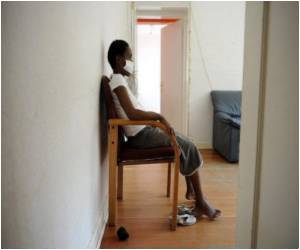All children's drug of choice in Africa's top oil-producing country is gasoline as evidence by an intoxicated boy who shuffles along a teeming street in Luanda casually gulping vapours

Easy access to gasoline, typically sold from homes in lemonade bottles, has given rise to substance abuse -- with addicts as young as 10-years-old, in a country where rehabilitation resources are scarce.
Users are mainly homeless children and delinquents, whose families bore the brunt of Angola's nearly three-decade civil war which ended in 2002.
"I started to take gasoline two months ago, I take it to make me feel happy," slurred 11-year-old Bentinho, as a stoned barefoot friend in tattered clothes chimed in, saying he liked the drug because it was easy to find.
A red rash around the mouth and sunken red eyes are tell tale signs of gasoline users. Long term use risks brain damage, according to medical reports.
The country's Association Against Drugs Abuse estimates that around 15 percent of juvenile drug users are abusing gasoline, before advancing to crack cocaine and other hard drugs.
Advertisement
The abuse of gasoline first emerged in the early 1990's when Angola was impoverished, but an influx of workers attracted to Luanda by the oil boom has seen the number of users soar, drug experts say.
Advertisement
Stoned children gather in groups along the dirt-strewn streets of Luanda, scavenging in wastebaskets or washing cars to get money for their next fix, selling at 100 kwanzas (almost one US dollar) for a 500 millilitre (16 ounces) bottle.
A 2009 UN Children's Fund (UNICEF) annual report says more than half of Angola's 18.5 million population are children under the age of 18, of whom 43,000 remain separated from their families.
"Some street children who are abusing drugs were displaced and others were abandoned by their parents after the end of the war because they could not support them," Francisco Tando, a Luanda-based anti-drug activist, told AFP.
"The problem is that there are no strict controls over the selling of gasoline. Children can easily buy it," Tando says.
The faith-based Remar Centre for Help and Rehabilitation is one of the few places providing help to children with drug problems.
However it only offers Christian interventions, using prayer and motivation to wean addicts off drugs and alcohol.
"These are children who have no idea what normal life feels like. The street has been their home for a long time," says Luis Macedo, a drug-addict turned preacher who runs Remar.
The charity is currently doubling the capacity of its shelter, where nearly 100 people are cramped into three halls filled with double bunk beds.
Koen Vanormelingen, head of the UNICEF in Angola, says that despite the country's improved economic outlook the prevalence of poverty is a major cause of drug addiction among children.
"Poverty levels are declining, but many families are still poor and children run away to cities and get exposed to drugs," he says, adding that a third of the population still live in extreme poverty.
"Angola is becoming a drug transit country, more drugs are being seized at the ports of entry. Children are more at risk," he adds.
Source-AFP










